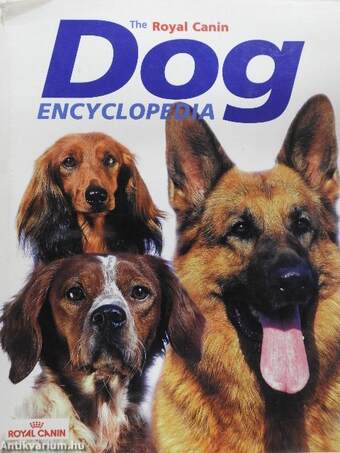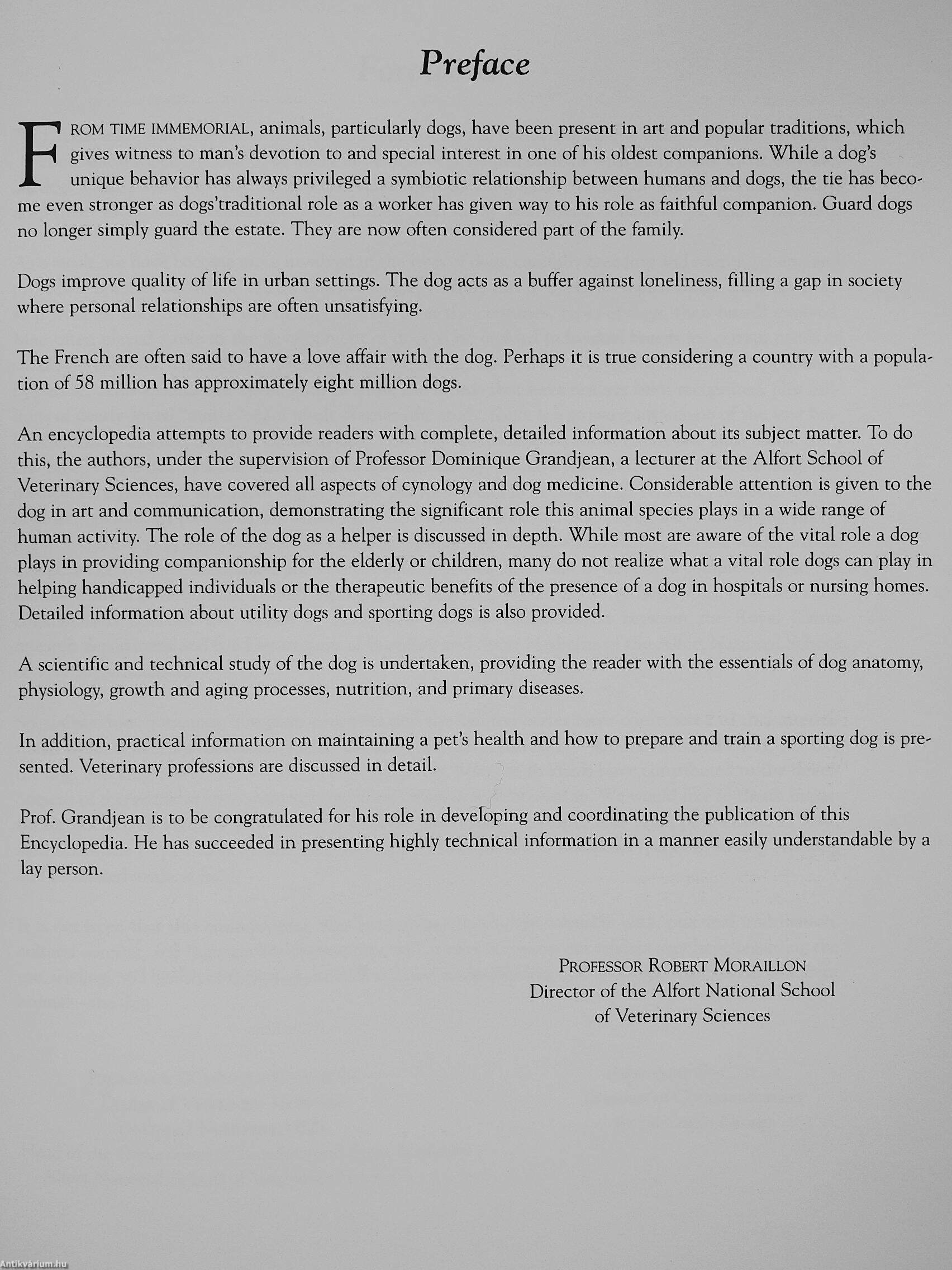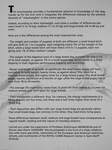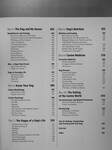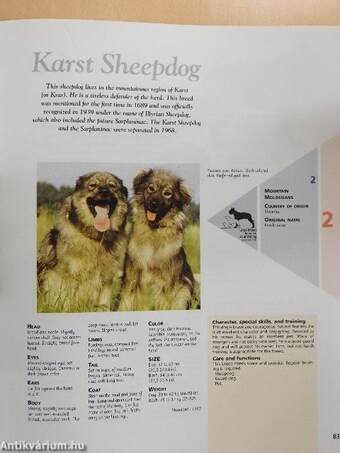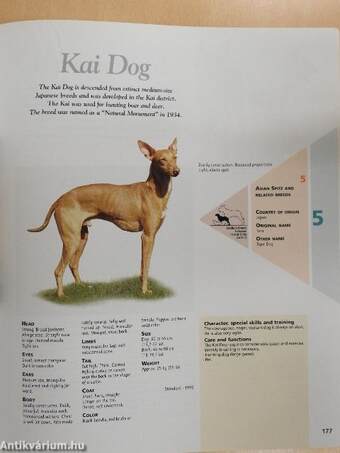1.067.884
kiadvánnyal nyújtjuk Magyarország legnagyobb antikvár könyv-kínálatát

VISSZA
A TETEJÉRE
JAVASLATOKÉszre-
vételek
The Royal Canin Dog Encyclopédia
| Kiadó: | Royal Canin Kft. |
|---|---|
| Kiadás helye: | Budaörs |
| Kiadás éve: | |
| Kötés típusa: | Fűzött kemény papírkötés |
| Oldalszám: | 639 oldal |
| Sorozatcím: | |
| Kötetszám: | |
| Nyelv: | Angol |
| Méret: | 29 cm x 23 cm |
| ISBN: | 2-914193-00-9 |
| Megjegyzés: | További kapcsolódó személyek a könyvben. Színes fotókkal. |
naponta értesítjük a beérkező friss
kiadványokról
naponta értesítjük a beérkező friss
kiadványokról
Előszó
TovábbFülszöveg
I,
I his encyclopedia provides a fundamental advance in knowledge of the dog, insofar as for the first time it integrates the differences induced by the extreme diversity of "sizes/weights" In the canine species.
Indeed, according to their size/weight, one notes a number of differences between small (1 to 10 kg), medium (11 to 25 kg) and large breeds (26 to 80 kg and over).
Here are a few differences among the most characteristic ones:
- The weight and number of puppies at birth are different: a small breed bitch will give birth to 1 to 3 puppies, each weighing nearly 5% of the weight of the bitch, while a large breed bitch will have litters of 8 to 12 puppies, each weighing only 1 % of their mother's weight.
- The weight of the digestive tract of a large breed dog accounts for only 2.7% of its total weight, as against 7% in a small breed dog, which results in a sharp disparity in their digestive performance (capacity and sensitivity).
- Range and length of growth: at... Tovább
Fülszöveg
I,
I his encyclopedia provides a fundamental advance in knowledge of the dog, insofar as for the first time it integrates the differences induced by the extreme diversity of "sizes/weights" In the canine species.
Indeed, according to their size/weight, one notes a number of differences between small (1 to 10 kg), medium (11 to 25 kg) and large breeds (26 to 80 kg and over).
Here are a few differences among the most characteristic ones:
- The weight and number of puppies at birth are different: a small breed bitch will give birth to 1 to 3 puppies, each weighing nearly 5% of the weight of the bitch, while a large breed bitch will have litters of 8 to 12 puppies, each weighing only 1 % of their mother's weight.
- The weight of the digestive tract of a large breed dog accounts for only 2.7% of its total weight, as against 7% in a small breed dog, which results in a sharp disparity in their digestive performance (capacity and sensitivity).
- Range and length of growth: at adulthood, the small breed puppy will have multiplied its birth weight twenty times, as against about fifty times for a medium breed puppy, and eighty times for a large breed puppy. The small breed puppy reaches adulthood at 8 months of age, while the large breed puppy has to wait from 18 to 24 months.
- The average life expectancy varies from 15 years for small breeds to 13 years for medium breeds and 10/11 years for large breeds.
- Their metabolism is different: thus, for instance, the energy requirements of a 50-kg dog are not five times, but three and a half times higher than those of a 10-kg dog.
- Their disposition also differs with size: large breed dogs are generally calmer than small breed dogs, but contrary to the latter, they need more living space.
These differences between small, medium and large breeds have consequences as regards health, feeding and the nature of man/dog relations.
Carried out under the supervision of Professor Dominique GRANDJEAN and of Doctor Jean-Pierre VAISSAIRE, this encyclopedia is the fruit of a close collaboration with many specialists, researchers of the European and American veterinary schools, and nutritionists of the ROYAL CANIN Research Center in Saint-Nolff (France). Vissza



